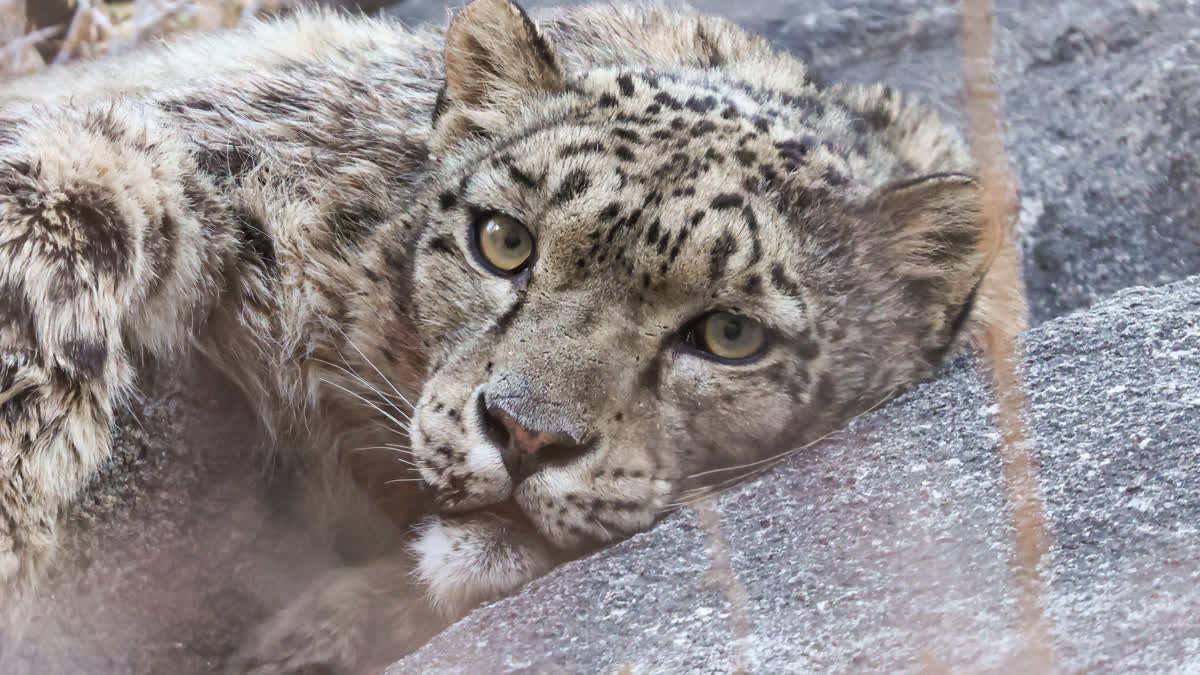By Rinchen Angmo Chumikchan
Ladakh: Found in the rugged mountains of Ladakh, the snow leopard—often called the 'Ghost of the Himalayas'—is both a conservation triumph and an enduring challenge. With Ladakh hosting 60% of India’s snow leopard population and around 9-10% of the global count, it has become a beacon for wildlife enthusiasts and ecologists alike. But this fragile balance is under threat from unregulated tourism, stray dog menace, and the looming spectre of climate change.
The latest Snow Leopard Population Assessment in India (SPAI) counted 718 snow leopards nationwide, with Ladakh leading at 477 followed by Uttarakhand (124), Himachal Pradesh (51), Arunachal Pradesh (36), Sikkim (21), and Jammu and Kashmir (9). Advanced methods like camera traps and AI-based analysis have refined these estimates, yet conservationists warn of limitations. Dr Tsewang Namgail, Director of the Snow Leopard Conservancy-India Trust, says, “While technology has improved accuracy, factors like changing coat patterns and environmental conditions complicate identification. A blend of AI and human expertise is critical for future surveys.”
Snow leopards, Ladakh’s state animal, are vital to the region’s ecosystem. As apex predators, they maintain ecological balance. “Their declining health is a warning sign for the entire ecosystem,” says Dr Namgail. Despite conservation milestones, challenges persist. Climate change forces these high-altitude creatures into ever-shrinking habitats, while unregulated tourism fuels a surge in stray dogs that prey on marmots, a key food source for snow leopards.
Communities in Ladakh have adopted conservation, with villages like Rumbak and Ulley transforming into hubs for snow leopard tourism. This shift has replaced retaliatory killings with pride and economic incentives. From November to April, Ladakh attracts 400–600 high-end tourists annually, creating livelihoods for locals. “Snow leopard tourism has changed the way communities perceive wildlife. It’s a win-win for people and predators,” says Lobzang Visuddha, Chairman of the Wildlife Conservation and Birds Club of Ladakh.
Dr Namgail elaborated that in the last 10-12 years, surveys have been conducted in Rong, Churgut, Sham, Uley Saspol valleys, and Hemis National Park, covering about 5,000 square km. Within this area, 39 snow leopards were identified. "Using extrapolation based on Ladakh's total area of over 65,000 square km, we estimate the population to be between 400 and 500. However, achieving precise data is challenging and requires concerted efforts, simultaneous surveys across locations, and the use of rigorous methodologies to avoid double counting,” he informed.
He highlighted the limitations of camera trapping and said environmental factors like wind can alter the appearance of a snow leopard’s coat, which can complicate identification. To address this, many are exploring the use of Artificial Intelligence (AI) for analyzing photographic data. A hybrid approach, blending AI with human intelligence, is necessary to improve accuracy, Dr Namgail further explained.
Globally, initiatives like the PAWS (Population Assessment of the World's Snow Leopards) Program and G-SLEP (Global Snow Leopard & Ecosystem Protection Program), coordinated by the Kyrgyzstan Secretariat and the Snow Leopard Trust, have introduced standardized methodologies to estimate snow leopard populations.
